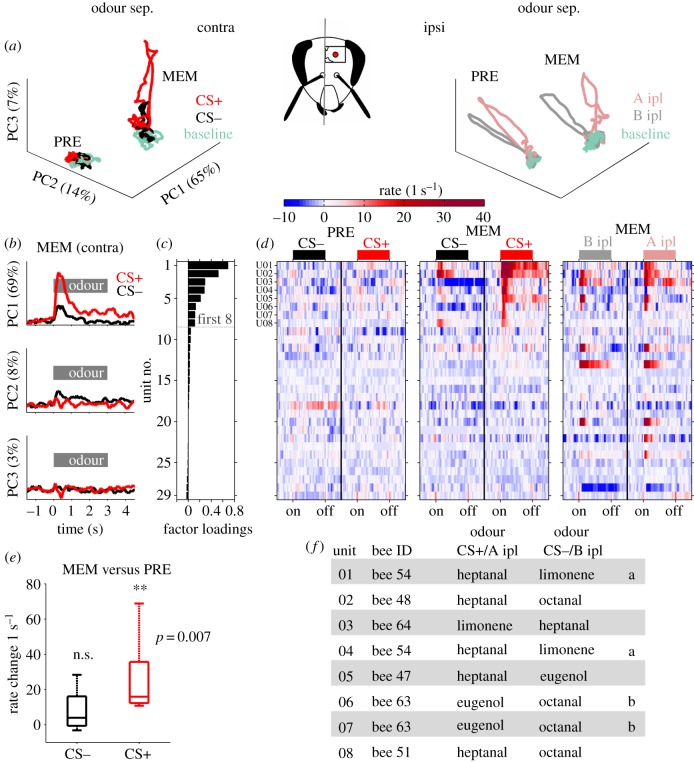Figure 3.
The MBON ensemble establishes a representation of the rewarded odour-side compound stimulus. (a) PCA of the population vectors across all units and stimuli for CS+ (red) and CS− (black; left) and the same odours but presented ipsilaterally (A ipl = pink, B ipl = grey; right) before (PRE) and after (MEM) conditioning. Trajectories of the first three principal components (PC1–3). Baseline activity before stimulation is drawn in green. The 3 s during odour stimulation are marked in the respective stimulus colour. Trajectories reflecting contralateral stimulation (left) illustrate that there was no stimulation induced activity in the PRE phase. A clear odour-induced population response for the CS+ was established during memory retention (MEM) 3 h after conditioning. Stimulation to the ipsilateral antenna (right) evoked clear odour-induced trajectories prior to (PRE) and after (MEM) conditioning. (b) A separate PCA was performed limited to the population vectors reflecting contralaterally induced activity during the MEM phase. Each panel illustrates the temporal response profile of one PC and indicates the explained variance. PC1 shows a clear odour-induced activation that resembles the average population rate response. (c) The single units were ordered with respect to their contributions to the variation of PC1 (factor loading). (d) Trial-averaged firing rate profiles of all units (ordered as in c). (e) The rate changes between the PRE and the MEM phase due to contralateral stimulation were calculated for the first 8 units (factor loading > 0.05). The distribution of rate changes is shown in a boxplot for CS+ (red) and CS− (black); the central mark indicates the median, edges indicate the 25th and 75th percentiles, whiskers extend to the most extreme data points. Only the CS+ showed a significant response rate increase (signed-rank test, p < 0.05). (f) Bee affiliation of the units and odour pairs used for differential conditioning. Identical letters indicate units recorded from the same animal.

